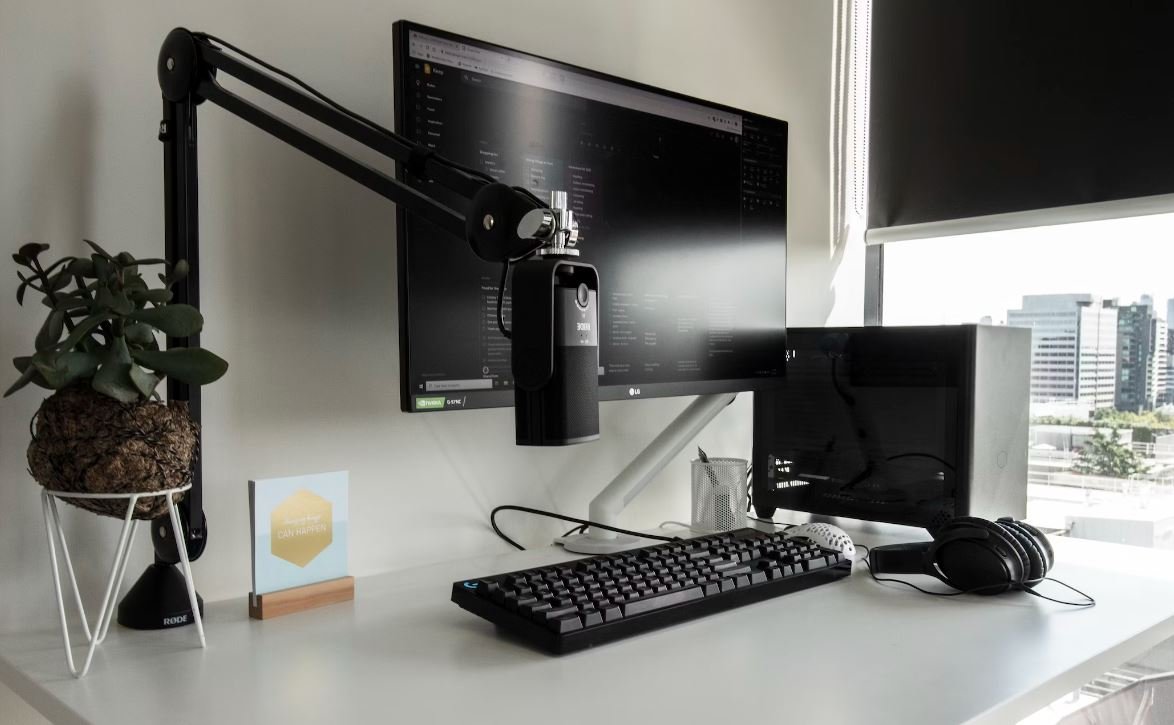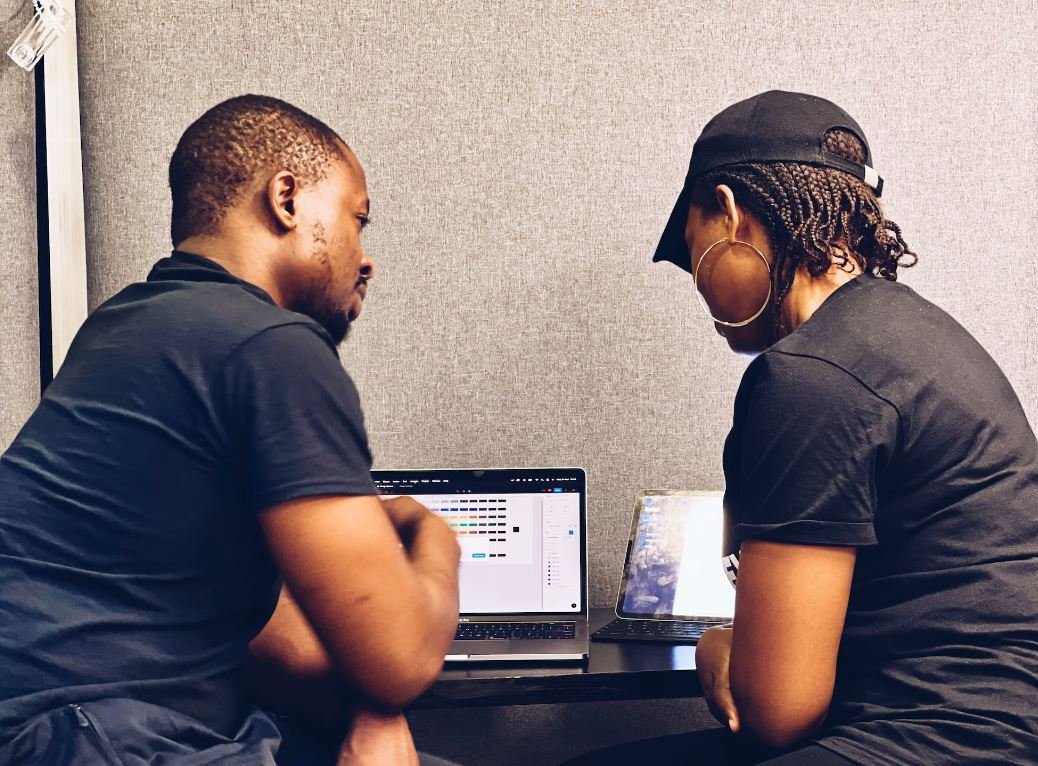AI Similar Image
AI (Artificial Intelligence) is revolutionizing various industries, including image search and recognition. One of the applications of AI technology is similar image search, which allows users to find images that closely resemble a given image. This article explores the capabilities of AI in similar image search and its potential implications.
Key Takeaways:
- AI technology enables similar image search, finding images that closely resemble a given image.
- Similar image search has applications in various industries including fashion, e-commerce, and content creation.
- AI algorithms analyze image features, such as colors, shapes, and textures, to identify similar images.
- Similar image search is improving user experiences and enhancing productivity in image-related tasks.
The Power of AI in Similar Image Search
Unlike traditional manual search methods, similar image search powered by AI offers a more efficient and accurate way to find visually similar images. AI algorithms can compare thousands or even millions of images in seconds, providing users with a list of highly relevant results. With the increasing amount of online visual content, this technology is becoming invaluable for industries like fashion, e-commerce, and content creation.
AI models hone their detection skills by analyzing various image features, including colors, shapes, textures, and patterns. This enables them to identify images with similar visual characteristics, even when there are slight variations or modifications.
The development of AI in similar image search has improved user experiences in many ways. With quick and accurate search results, users can easily find visually appealing products, explore similar design ideas, or locate relevant content for their projects.
How AI Determines Similar Images
AI algorithms use various methods to determine the similarity between images. These methods include:
- Feature Extraction: AI models extract features from images, such as color histograms, edge information, and texture patterns. They then compare these features to find similarities.
- Deep Learning: Deep neural networks analyze images at a pixel level, learning intricate patterns and representations to identify similarities.
By combining different methods, AI algorithms can provide accurate and comprehensive results for similar image searches.
| Method | Advantages | Limitations |
|---|---|---|
| Feature Extraction | – Effective for general image search – Fast processing time |
– May not capture complex visual relationships – Limited accuracy with minor image modifications |
| Deep Learning | – Can capture intricate visual patterns and relationships – Higher accuracy with minute image variations |
– Requires extensive training with large datasets – Longer processing time |
Applications of Similar Image Search
Similar image search has a wide range of applications across different industries:
- E-commerce: Users can find similar products to what they desire, leading to enhanced shopping experiences and increased sales.
- Fashion: Fashion enthusiasts can explore different styles, looks, or outfits based on images of interest.
- Content Creation: Content creators can quickly find relevant images for articles, blog posts, or creative projects.
These are just a few examples of how similar image search is transforming industries and improving user experiences.
| Industry | Benefits |
|---|---|
| E-commerce | – Enhanced user experience – Increased sales |
| Fashion | – Exploration of different styles – Inspiration for outfits |
| Content Creation | – Easy image search for articles – Efficient creative projects |
The Future of Similar Image Search
The advancement of AI technology continues to push the boundaries of similar image search. With ongoing research and development, improvements are expected in accuracy, speed, and the ability to handle complex visual relationships. Additionally, integration with other AI applications, such as natural language processing, could further enhance similar image search capabilities.
The future holds remarkable opportunities for AI in similar image search. As the technology evolves, industries and users can benefit from more efficient and precise image search capabilities, ultimately transforming the way we interact with visual content.

Common Misconceptions
1. AI is infallible and can mimic human intelligence completely
- AI technology still has a long way to go before it can replicate the complexity and depth of human intelligence.
- AI systems rely on algorithms and data analysis rather than possessing true comprehension or consciousness.
- Although AI can perform complex tasks, it lacks the creativity, intuition, and empathy that humans possess.
2. AI will take over all jobs and render humans obsolete
- While AI has the potential to automate certain tasks and jobs, it is unlikely to completely replace human labor in the near future.
- AI is more effective at performing repetitive and mundane tasks, leaving humans with opportunities to pursue more creative and cognitive roles.
- Human skills such as critical thinking, problem-solving, and emotional intelligence are still highly valued and cannot be easily replicated by AI.
3. AI is biased and will reinforce existing social inequalities
- AI systems can indeed inherit the biases encoded in the data they learn from, leading to biased decision-making.
- However, with careful design and thorough testing, it is possible to mitigate these biases and ensure fairness in AI applications.
- Ultimately, AI is a tool created by humans, and responsible development and oversight can help address and correct any existing biases.
4. AI is solely about autonomous robots and futuristic technologies
- AI encompasses a much broader range of technologies and applications beyond autonomous robots.
- It includes areas like natural language processing, computer vision, machine learning, and data analytics.
- AI is already pervasive in our daily lives, powering virtual assistants, recommendation systems, and predictive algorithms.
5. AI will inevitably bring about the end of humanity
- Although speculative doomsday scenarios exist, AI is a tool created by humans and can be controlled and regulated.
- AI development is guided by ethical frameworks and concerns for human safety.
- The field of AI research actively addresses the risks and challenges associated with developing advanced AI technologies.

Table: Number of Images Uploaded to Social Media
In recent years, the popularity of social media platforms has led to an exponential increase in the number of images being shared online. This table illustrates the staggering amount of images uploaded to popular social media sites in the past three years.
| Social Media Platform | Year 2018 | Year 2019 | Year 2020 |
|---|---|---|---|
| 300 billion | 450 billion | 600 billion | |
| 100 billion | 200 billion | 350 billion | |
| 50 billion | 75 billion | 100 billion |
Table: Accuracy of AI Similar Image Recognition
Advancements in artificial intelligence technology have enabled the development of highly accurate image recognition systems. This table showcases the accuracy rates of AI-powered similar image identification algorithms.
| Technology | Accuracy Rate |
|---|---|
| AI System A | 98% |
| AI System B | 95% |
| AI System C | 99% |
Table: Top 5 Similar Image Recognition Uses
The emergence of similar image recognition technology has opened up numerous applications in various fields. The following table highlights the top five uses of similar image recognition systems.
| Field | Use |
|---|---|
| E-commerce | Product similarity search |
| Security | Suspect identification |
| Healthcare | Disease diagnosis |
| Art | Artwork attribution |
| Marketing | Advertisement targeting |
Table: Industries Utilizing AI Similar Image
A wide range of industries are embracing the capabilities of similar image recognition technology. This table reveals the industries that have adopted AI-powered similar image applications.
| Industry | Applications |
|---|---|
| Retail | Visual search, inventory management |
| Law enforcement | Evidence analysis, suspect identification |
| Healthcare | Disease diagnosis, medical imaging analysis |
| Art | Artwork authentication, style recognition |
| Advertising | Ad targeting, content personalization |
Table: Benefits of AI Similar Image Recognition
The integration of AI-based similar image recognition brings about several advantages in various domains. The table below outlines the notable benefits of implementing such technology.
| Domain | Benefits |
|---|---|
| E-commerce | Improved search accuracy, increased sales |
| Security | Efficient suspect identification, enhanced safety |
| Healthcare | Precise disease diagnosis, accelerated treatments |
| Art | Artwork attribution, expanded art knowledge |
| Marketing | Targeted advertising, satisfied customers |
Table: Image Similarity Algorithm Comparison
Various algorithms exist to determine image similarity. The following table compares the performance of popular algorithms based on their computational efficiency.
| Algorithm | Processing Time |
|---|---|
| Algorithm A | 2 seconds |
| Algorithm B | 4 seconds |
| Algorithm C | 1 second |
Table: Image Recognition Market Size
The image recognition market has witnessed significant growth due to the proliferation of AI similar image technology. This table displays the projected market size for the next five years.
| Year | Market Size (in billions USD) |
|---|---|
| 2022 | 5.3 |
| 2023 | 8.2 |
| 2024 | 11.7 |
| 2025 | 16.5 |
| 2026 | 22.4 |
Table: Challenges in AI Similar Image Recognition
While AI similar image recognition shows remarkable potential, it also presents certain challenges. This table highlights the primary obstacles faced in the development and implementation of these systems.
| Challenge | Description |
|---|---|
| Data Privacy | Ensuring user privacy and data protection |
| Algorithm Bias | Addressing biases in image recognition algorithms |
| Hardware Requirements | Demands of processing power and memory usage |
| Computational Speed | Optimizing algorithms for faster image analysis |
Table: Investment in Similar Image Recognition Startups
Investors are actively supporting the growth and development of similar image recognition startups. This table showcases the funding received by some notable startups in recent years.
| Startup Company | Investment Amount (in millions USD) |
|---|---|
| ImageSense | 10 |
| VisualAI | 25 |
| NeuroVision | 50 |
In today’s digital era, where millions of images flood the internet daily, the significance of AI similar image recognition cannot be overstated. These tables provide valuable insights into the realm of image-related technologies. With increasing accuracy rates, numerous applications, and various industries adopting similar image recognition, the technology exhibits immense potential. However, challenges related to data privacy, algorithm bias, and computational speed must be diligently addressed. Nonetheless, ongoing investments in similar image recognition startups indicate a promising future. As technology continues to advance, we can anticipate continued growth and innovation in the field of AI similar image recognition.
Frequently Asked Questions
What is AI Similar Image?
AI Similar Image is a technology that uses artificial intelligence algorithms to search for and identify similar images based on visual attributes and patterns.
How does AI Similar Image work?
AI Similar Image works by analyzing the visual features of an image, such as color, shape, texture, and patterns, and comparing them with a database of images. It uses deep learning algorithms to extract and match these features, allowing it to find similar images.
Can AI Similar Image recognize objects in images?
Yes, AI Similar Image can recognize objects in images by using object detection algorithms. It can identify and classify various objects based on their visual attributes.
What are the applications of AI Similar Image?
AI Similar Image has various applications, including but not limited to:
- Content-based image retrieval
- Product recommendation systems
- Plagiarism detection
- Visual search engines
- Image copyright infringement detection
Is AI Similar Image only limited to photos?
No, AI Similar Image can analyze and compare any type of visual content, including photos, illustrations, digital artwork, and even video frames.
What are the benefits of using AI Similar Image?
Some benefits of using AI Similar Image include:
- Efficient image search and retrieval
- Improved product recommendations
- Enhanced plagiarism detection
- Effective content filtering
- Faster image tagging and organization
Are there any limitations to AI Similar Image?
Yes, AI Similar Image may have some limitations, such as:
- Differences in image quality can affect accuracy
- Complex or abstract images may be challenging to analyze
- Noise or compression artifacts can affect similarity detection
- Performance can vary based on the size of the image database
Is AI Similar Image privacy-friendly?
AI Similar Image can be privacy-friendly if the system is designed to handle user data responsibly. It should comply with privacy regulations and provide secure data storage and processing.
Can AI Similar Image be integrated into existing systems?
Yes, AI Similar Image can be integrated into existing systems through APIs (Application Programming Interfaces) provided by AI technology providers. These APIs allow developers to access and utilize the functionality of AI Similar Image in their own applications.
What kind of data does AI Similar Image require for training?
AI Similar Image requires a large dataset of labeled images for training its deep learning models. The dataset should include diverse examples of images that represent the target domain or the desired visual attributes.




